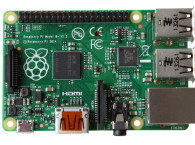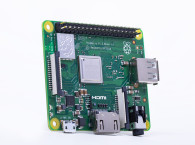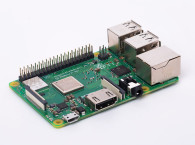All over the world, electronics and computer programming enthusiasts are celebrating the launch of the new Raspberry Pi 3 platform, the first with built-in Wi-Fi and Bluetooth 4.1, keeping with the tradition of an affordable computer for all, at just $35! The Raspberry Pi 3 features a 1.2GHz 64-bit quad-core CPU, giving about 10x the performance of a Raspberry Pi 1. And it’s completely compatible with Raspberry Pi 1 and 2.

The idea behind a tiny and affordable computer came in 2006, when Eben Upton, Rob Mullins, Jack Lang and Alan Mycroft, based at the University of Cambridge’s Computer Laboratory, became concerned about the year-on-year decline in the numbers and skills levels of the A Level students applying for Computer Science. From a situation in the 1990s where most of the kids applying were coming to interview as experienced hobbyist programmers, the landscape in the 2000s was very different; a typical applicant might only have done a little web design.
Something had changed the way kids were interacting with computers. A number of problems were identified: the colonization of the ICT curriculum with lessons on using Word and Excel, or writing webpages; the end of the dot-com boom; and the rise of the home PC and games console to replace the Amigas, BBC Micros, Spectrum ZX and Commodore 64 machines that people of an earlier generation learned to program on.
The group felt they could do something to address this situation and, from 2006 to 2008, they designed several versions of what would become the Raspberry Pi. By 2008, processors designed for mobile devices were becoming more affordable, and powerful enough to provide excellent multimedia, a feature the creators felt would make the board desirable to kids who wouldn’t initially be interested in a purely programming-oriented device.
Eben (now a chip architect at Broadcom), Rob, Jack and Alan, teamed up with Pete Lomas, MD of hardware design and manufacture company Norcott Technologies, and David Braben, co-author of the seminal BBC Micro game Elite, created the Raspberry Pi Foundation to make it a reality. Three years later, the Raspberry Pi Model B entered mass production through licensed manufacture deals with element 14/Premier Farnell and RS Electronics (Allied), and within two years it had sold over two million units.
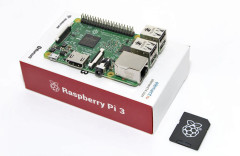 Exactly four years ago, on 29 February 2012, the Raspberry Pi Foundation unleashed the original 256MB Raspberry Pi Model B. Since then, over eight million units where sold, including three million units of Raspberry Pi 2. In celebration of its fourth birthday, the foundation now released the updated Raspberry Pi 3 featuring a 1.2GHz 64-bit quad-core ARM Cortex-A53 CPU (~10x the performance of Raspberry Pi 1), integrated 802.11n wireless LAN and Bluetooth 4.1. The price is the same as the existing Raspberry Pi 2 ($35), which will, like the Raspberry Pi 1, stay in production. Raspberry Pi 1 Model B+ and Raspberry Pi 2 Model B will also continue to sell for $25 and $35 respectively.
Exactly four years ago, on 29 February 2012, the Raspberry Pi Foundation unleashed the original 256MB Raspberry Pi Model B. Since then, over eight million units where sold, including three million units of Raspberry Pi 2. In celebration of its fourth birthday, the foundation now released the updated Raspberry Pi 3 featuring a 1.2GHz 64-bit quad-core ARM Cortex-A53 CPU (~10x the performance of Raspberry Pi 1), integrated 802.11n wireless LAN and Bluetooth 4.1. The price is the same as the existing Raspberry Pi 2 ($35), which will, like the Raspberry Pi 1, stay in production. Raspberry Pi 1 Model B+ and Raspberry Pi 2 Model B will also continue to sell for $25 and $35 respectively. The 900MHz 32-bit quad-core ARM Cortex-A7 CPU complex has been replaced by a custom-hardened 1.2GHz 64-bit quad-core ARM Cortex-A53. Combining a 33% increase in clock speed with various architectural enhancements, this provides a 50-60% increase in performance in 32-bit mode versus Raspberry Pi 2, or roughly a factor of ten over the original Raspberry Pi.
The 900MHz 32-bit quad-core ARM Cortex-A7 CPU complex has been replaced by a custom-hardened 1.2GHz 64-bit quad-core ARM Cortex-A53. Combining a 33% increase in clock speed with various architectural enhancements, this provides a 50-60% increase in performance in 32-bit mode versus Raspberry Pi 2, or roughly a factor of ten over the original Raspberry Pi.James Adams spent the second half of 2015 designing a series of prototypes, incorporating BCM2837 alongside the BCM43438 wireless “combo” chip. He was able to fit the wireless functionality into very nearly the same form-factor as the Raspberry Pi 1 Model B+ and Raspberry Pi 2 Model B; the only change is to the position of the LEDs, which have moved to the other side of the SD card socket to make room for the antenna.
 The Raspberry Pi 3 board features:
The Raspberry Pi 3 board features:40pin extended GPIO
CSI camera port for connecting the Raspberry Pi camera
DSI display port for connecting the Raspberry Pi touch screen display
4 x USB 2 ports
4 pole Stereo output and Composite video port
Full size HDMI
Micro SD port for loading operating system and storing data
All of the connectors are in the same place and have the same functionality, and the board can still be run from a 5V micro-USB power adapter. A 2.5A adapter is recommended to connect power-hungry USB devices to the Raspberry Pi.
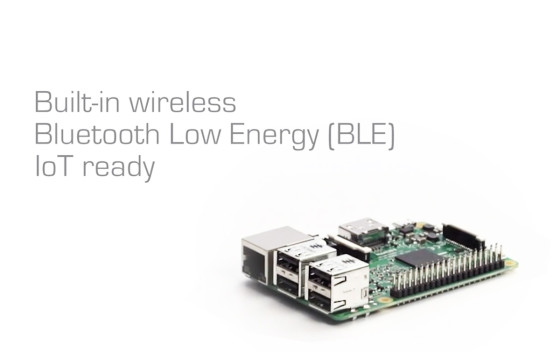
element14 and RS Components/Allied provide a micro SD card to boot the Raspberry Pi 3, bundled with a range of productivity applications, and programming tools including Node-RED. Microsoft also supports the Raspberry Pi platform with its version of Windows 10 for IoT (called Windows 10 IoT Core).
www.rs-components.com | www.element14.com
www.raspberrypi.org



